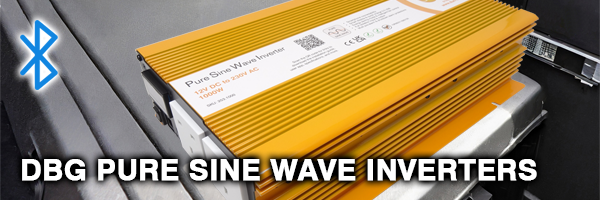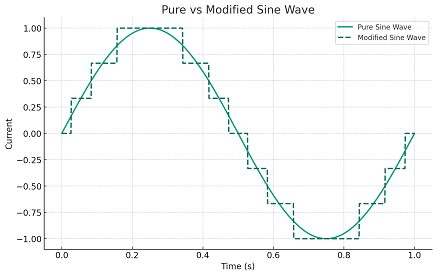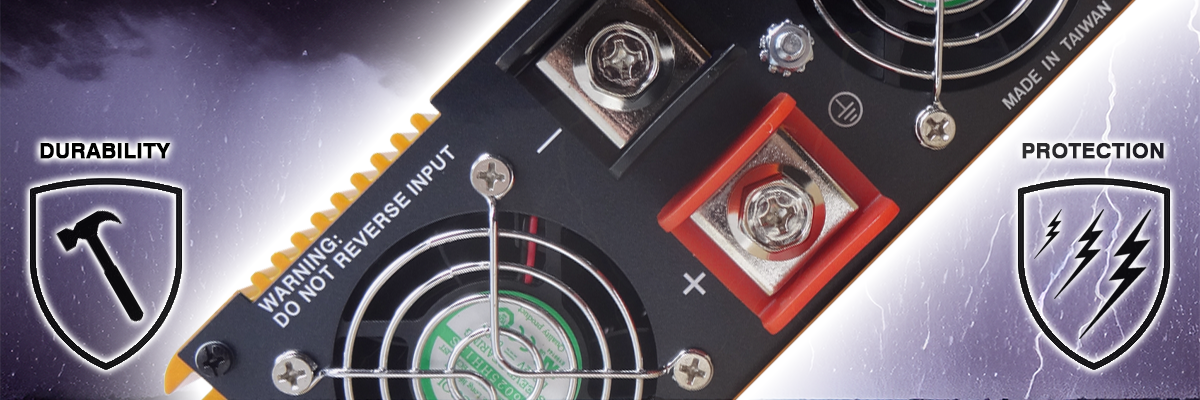15 January 2024
- Introduction
- What is a Power Inverter?
- Types of Power Inverters
- Importance of Power Inverters in Commercial Vehicles
- Key Features to Consider
- Conclusion

Explore the essential role of power inverters in commercial vehicles with Dun-Bri Group. These devices are more than just technical components; they're the heartbeat of essential services, converting battery power into a versatile energy source for everything from construction tools to life-saving medical equipment. In this blog post, we'll demystify power inverters, highlighting their critical role in ensuring operational efficiency, whether in an ambulance, on a construction site, or within a fleet of commercial vehicles. Join us on this journey to appreciate how power inverters are not just parts, but key allies in your business operations.
| Section |
Key Takeaways |
| Introduction |
Power inverters are crucial for converting DC to AC power in commercial vehicles, enabling a wide range of devices to be used on the go. |
|
| What is a Power Inverter? |
Power inverters convert DC power from vehicle batteries into AC power, necessary for most electronic equipment and tools. |
|
| Types of Power Inverters |
Two main types: Pure Sine Wave Inverters (ideal for sensitive equipment) and Modified Sine Wave Inverters (suitable for basic tools and non-sensitive electronics). |
|
| Importance of Power Inverters in Commercial Vehicles |
Inverters provide versatility in power supply, enhance operational efficiency and productivity, and contribute to safety and reliability. |
|
| Key Features to Consider |
Consider power output, efficiency, safety features, size and installation requirements, and durability and warranty when selecting an inverter. |
|
| Conclusion |
Power inverters are essential for modern, efficient, and flexible commercial vehicle operations. The right inverter enhances functionality, safety, and productivity. |
|
|
Ever wondered how a truck's coffee maker or a service van's laptop charger works? The secret is the power inverter, a compact but powerful device that transforms vehicle battery power into usable energy for everyday devices. A power inverter converts direct current (DC) from the vehicle battery into alternating current (AC), the standard for most equipment, from smartphones to power tools.
This conversion is essential for versatility; while DC is great for powering the vehicle, AC is needed for most other devices. The inverter seamlessly and safely transforms DC into AC, much like translating one language to another. This makes power inverters crucial in commercial vehicles, enabling the use of various tools and devices on the go.
In summary, power inverters bridge the gap between a vehicle’s raw energy and the needs of modern electronics, fostering efficiency and convenience. Up next, we’ll dive into different inverter types, their uses, and how the right choice can enhance your operations.

Just like choosing the right tool for a specific job, selecting the right type of power inverter is crucial for ensuring efficiency and reliability in commercial vehicles. Let's focus on the two primary types of inverters you're likely to encounter and consider for your fleet - pure sine wave and modified sine wave inverters.
1. Pure Sine Wave Inverters
- Description: Think of pure sine wave inverters as the all-rounders in power conversion. They produce a smooth, consistent wave of AC power, closely resembling the power supplied by a standard electrical outlet.
- Ideal Use: These inverters are indispensable for equipment requiring high-quality, stable power. This includes sensitive electronic devices such as medical equipment in ambulances or precision instruments in mobile workshops.
- Advantages: Their biggest draw is the ability to run complex devices seamlessly, minimizing the risk of damage or operational interference. Users appreciate their efficiency, reliability, and quiet operation, making them a top choice for critical applications.
2. Modified Sine Wave Inverters
- Description: Modified sine wave inverters offer a more cost-effective solution, generating a simpler form of AC power that suits a wide range of everyday devices.
- Ideal Use: These inverters are perfectly adequate for powering basic electrical tools, standard lights, and appliances that don’t demand precise power control.
- Advantages: They strike a balance between performance and cost, offering a practical solution for many common applications. While not as refined as pure sine wave inverters, they provide sufficient power for a broad spectrum of commercial vehicle needs.
The choice between a pure sine wave and a modified sine wave inverter largely depends on the specific requirements of your fleet's equipment. For high-end, sensitive electronics, a pure sine wave inverter is the recommended choice. However, for more general applications where such precision isn't necessary, a modified sine wave inverter can be a cost-effective and efficient alternative.
In the next section, we will explore the importance of power inverters in commercial vehicles, highlighting how they contribute to operational efficiency and the diverse capabilities they bring to the table.
In the dynamic world of commercial transport and service vehicles, power inverters are much more than just accessories; they are essential tools that significantly enhance operational capabilities. Let's explore the key reasons why power inverters are indispensable in commercial vehicles.
1. Versatility in Power Supply
- Central to Flexibility: Power inverters transform the standard DC power from a vehicle’s battery into AC power, which is necessary for most of the equipment used in commercial settings. This versatility allows for a wide range of devices to be used right from the vehicle, from laptops and smartphones to heavy-duty power tools.
- On-the-Go Convenience: With a power inverter, a commercial vehicle transforms into a mobile workstation or service center, capable of powering essential tools and devices anywhere, anytime. This is especially crucial for industries like construction, road maintenance, or emergency services.
2. Enhanced Efficiency and Productivity
- Reduced Downtime: Inverters enable the use of standard electrical equipment without the need for specialized vehicle adaptations. This means less downtime waiting for the right tool or equipment, leading to more efficient work processes.
- Greater Self-Sufficiency: For vehicles that operate in remote locations or need to be self-contained, such as mobile medical units or field service vehicles, inverters are vital. They allow these vehicles to operate independently, without relying on external power sources.
3. Operational Safety and Reliability
- Safe Power Supply: Modern power inverters are equipped with safety features like overload protection, short-circuit protection, and automatic shut-off, ensuring the safe operation of both the vehicle and the equipment being powered.
- Reliable Performance: High-quality inverters, like those offered by Dun-Bri Group, provide a stable and reliable power source, which is essential for the safe and effective operation of sensitive equipment, such as medical devices or precision tools.
4. Economic Benefits
- Cost-Effectiveness: By enabling the use of standard AC-powered equipment, inverters reduce the need for purchasing specialized DC-powered tools, leading to significant cost savings.
- Value Addition: The addition of a power inverter can increase the utility and, therefore, the value of a commercial vehicle, making it a smart investment for businesses looking to maximize their vehicle's capabilities.
In essence, power inverters are the lifeline of commercial vehicles, empowering them to serve as versatile, efficient, and reliable tools of trade. They not only facilitate smooth and effective operations but also contribute to the overall productivity and success of a wide array of industries.
As we continue in our series, we’ll delve deeper into the features to consider when choosing a power inverter, ensuring you make the best choice for your specific needs. Stay tuned for more insights!

When it comes to selecting the right power inverter for your commercial vehicles, several key features need to be considered to ensure optimal performance and compatibility. This section outlines the essential aspects to look for, helping you make an informed decision for your fleet.
1. Power Output
- Understanding Capacity: The power output of an inverter, measured in watts, determines the types of devices and tools it can support. It’s crucial to choose an inverter with a suitable capacity for your needs – underestimating can lead to overload, while overestimating may mean unnecessary expense.
- Matching to Demand: Consider the total wattage of the devices you plan to use simultaneously. For high-power tools or multiple devices, opt for an inverter with a higher wattage capacity.
2. Efficiency and Quality of Power
- Efficiency Rating: Inverters come with an efficiency rating, usually expressed as a percentage. This rating indicates how effectively the inverter converts DC power to AC power. Higher efficiency means less energy is lost as heat, leading to better performance and lower running costs.
- Pure vs. Modified Sine Wave: As discussed earlier, the type of AC power (pure or modified sine wave) affects which devices can be safely and effectively powered. Pure sine wave inverters are preferable for sensitive electronics and precision tools.
3. Safety Features
- Overload Protection: This feature prevents the inverter (and your devices) from damage if the connected load exceeds its capacity.
- Thermal Protection: Thermal protection automatically shuts down the inverter if it overheats, preventing potential hazards.
- Short Circuit and Surge Protection: Essential for preventing damage to both the inverter and the connected devices in case of a short circuit or power surge.
4. Size and Installation Requirements
- Physical Dimensions: Consider the physical size of the inverter and ensure it fits in the designated space within your vehicle.
- Ease of Installation: Some inverters are plug-and-play, while others may require professional installation. Assess the installation process and whether it aligns with your capabilities or if you'll need additional support.
5. Durability and Warranty
- Build Quality: Given the demanding environments of commercial vehicles, choose an inverter that is robust and built to last.
- Warranty and Support: Look for products with a solid warranty and accessible customer support. A good warranty reflects the manufacturer's confidence in their product and assures you of support in case of issues.
By carefully considering these features, you can ensure that the power inverter you choose not only meets but exceeds your operational requirements. In the next and final section of our series, we'll wrap up with a conclusion that reinforces the importance of power inverters in commercial vehicles and guide you on the next steps.
As we wrap up our comprehensive guide on power inverters for commercial vehicles, it's clear that these devices are not just optional extras, but vital components that enhance the functionality, efficiency, and capability of your fleet. Power inverters bring a world of convenience and operational flexibility, allowing commercial vehicles to meet the diverse and demanding needs of today's mobile, tech-driven environment.
Recap of Key Insights:
- Understanding the Basics: We started by demystifying what power inverters are and how they transform DC power into AC power, making them indispensable for powering a variety of tools and devices on the go.
- Types of Inverters: We explored the two main types of inverters – pure sine wave and modified sine wave – and how each serves different needs, emphasizing the importance of choosing the right type for your specific applications.
- The Crucial Role of Inverters: We highlighted the versatility, efficiency, and safety benefits that inverters bring to commercial vehicles, proving that they are much more than just power conversion devices.
- Features to Consider: Finally, we delved into the key features to consider when selecting an inverter, including power output, efficiency, safety features, installation requirements, and durability.
As a leader in the auto-electrical industry, Dun-Bri Group is committed to not only providing top-quality power inverters but also to ensuring that you have the knowledge and support to choose the best solutions for your needs. We understand that the right inverter can make all the difference in your daily operations, contributing to the overall productivity and success of your business.
Whether you’re outfitting a single vehicle or an entire fleet, the importance of selecting the right power inverter cannot be overstated. It’s about investing in efficiency, safety, and reliability. We encourage you to review your current and future needs, consider the insights shared in this series, and make a choice that will empower your business to operate at its best.
Thank you for joining us on this enlightening journey. Should you have any questions or need further assistance in selecting the perfect power inverter for your commercial vehicles, the team at Dun-Bri Group is here to help. Together, let's drive your business forward with the right tools and technology.